
Curious readers regularly post questions here at GBA on how to size minisplit heat pumps and how to select the right equipment. Although our web site contains dozens of articles on the topic, the questions keep coming — so it’s time to provide some straightforward guidance on this issue.
First, calculate the heating and cooling loads
The first required step for anyone who wants to install HVAC equipment is to perform a room-by-room load calculation. In other words, the designer needs to calculate the anticipated heating load for each room under the coldest likely conditions, as well as the anticipated cooling load for each room under the hottest likely conditions. Although most people have heard of load calculations, which are code-required, this step is often ignored.
Getting an accurate load calculation isn’t easy; most HVAC contractors grossly overestimate design heating loads and design cooling loads. For more information on obtaining an accurate load calculation, see these articles:
- “Saving Energy With Manual J and Manual D”
- “How to Perform a Heat-Loss Calculation — Part 1”
- “How to Perform a Heat-Loss Calculation — Part 2”
- “Who Can Perform My Load Calculations?”
Installing a separate minisplit head in each bedroom is a mistake
The typical bedroom has a design heating load of 2,500 BTU/h or less — far less than the rating on a typical ductless minisplit head, which usually ranges from 9,000 to 12,000 BTU/h. If your HVAC contractor is advising you to install a separate minisplit head in each bedroom, it’s probably time to choose a different contractor. (Of course, an unusually large bedroom that is poorly insulated, leaky, or equipped with very large windows may have a much higher design heating load than average — so it always pays to do the math.)
Instead of installing a ductless minisplit head in each bedroom, a better…
Weekly Newsletter
Get building science and energy efficiency advice, plus special offers, in your inbox.

This article is only available to GBA Prime Members
Sign up for a free trial and get instant access to this article as well as GBA’s complete library of premium articles and construction details.
Start Free TrialAlready a member? Log in






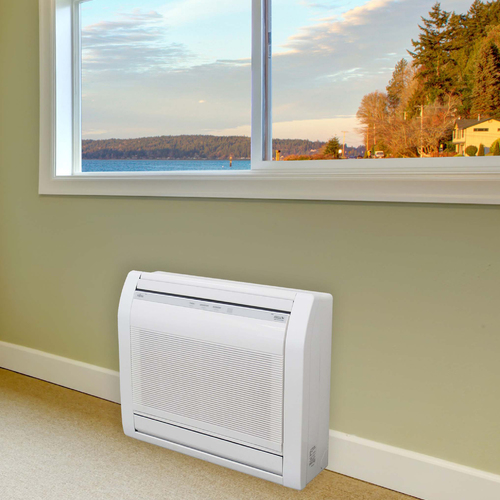
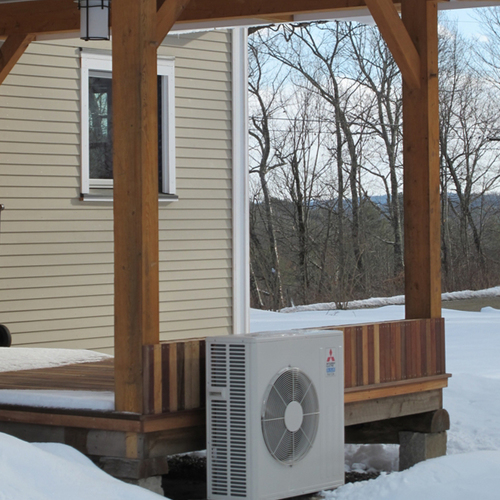
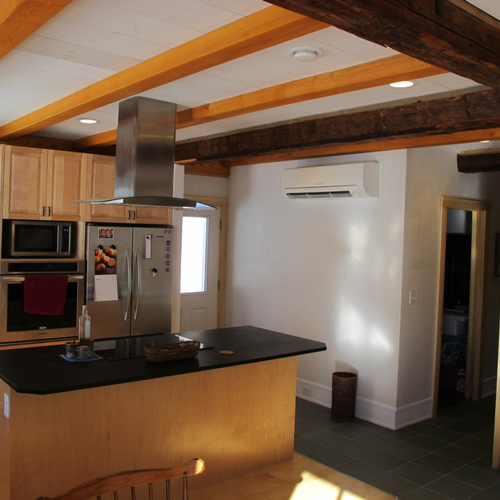
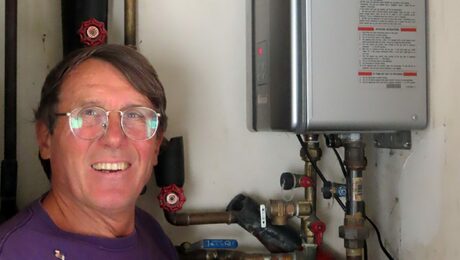

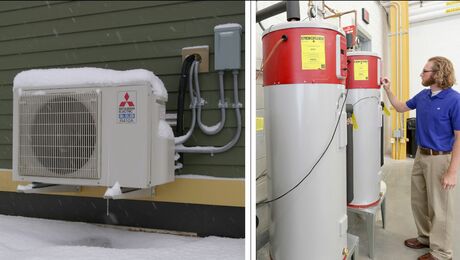
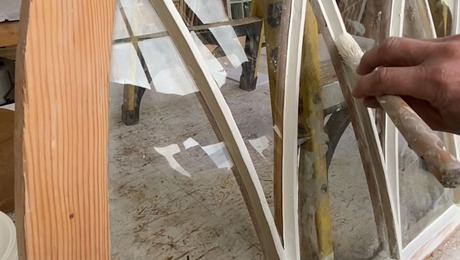
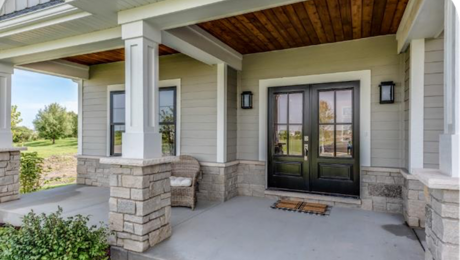
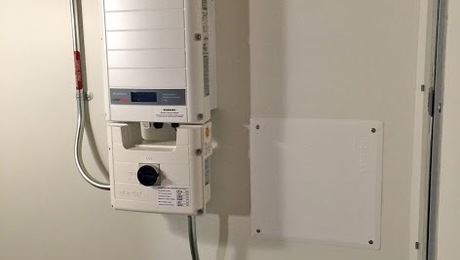
86 Comments
Martin, I dont when this piece was written but, i hope you're writing articles twenty years from now!
Russell,
This article is brand new. In 20 years, I'll be 84 years old, and dementia may have set in.
I'm guessing that Dana Dorsett is younger than I am, so stick with Dana.
Don't count on that guess about relative age being accurate... (I'm guessing were at most a few months apart.)
BTW: I believe photo credit should be Larry Waters of A1-Guaranteed Heating & Air Inc in Vallejo CA. He posted that pic in one of his response on a GTM blog piece on a house his company did the mechanicals on. You might confirm via phone: 707-342-1981
https://www.greentechmedia.com/articles/read/what-does-it-take-to-electrify-everything-in-your-home#gs.up9cwi
https://uploads.disquscdn.com/images/7843213f27734395e6ede8ea696552a8eafd3a2dd7f62c2b61241bb23189a293.jpg
https://uploads.disquscdn.com/images/7843213f27734395e6ede8ea696552a8eafd3a2dd7f62c2b61241bb23189a2
https://a-1guaranteed.com/meet-the-team/
https://a-1guaranteed.com/
Dana,
Thanks for the correction on the photo credit. And I guess your ski videos made you look younger than you really are...
Just 'cuz I sometimes act like I'm eleven years old doesn't mean that's my chronological age. :-)
Great collection of best practices, and a few how not to do its. My experience has forced me to many of the same conclusions. I live in the great Northwest where we are lucky enough to have dry summer conditions. I do wonder about the ability of DHPS to dehumidify when always operating under low load conditions in those parts of the world that have humid summers. Does the coil get cold enough on low speeds to get the job done?
Thanks, great article
I love this post. I'll be honest, it's a challenge to find professionals who might be aware of the details. I didn't have much success in my neck of the woods (Seattle). Multiple quotes involved up to 36 btu of heating/cooling. Got some insights on GBA. While I made it through the heat loss calcs, (about 18K for the total house) the Manual D didn't get employed. I offer the shot for insight, constructive criticism. It's a 9RLFCD serving the three primary rooms in my basement. Still in a loooong remodel. There's a separate 9RLS3Y serving the first floor. Wall mount in an open plan with living, kitchen bath, and two bedrooms (800 sq ft). In the basement, this unit is mounted in a Garage (to become rec room) with one 8 inch splitting to two six inch ducts to individual bedrooms (about 12 ft length) north. The walls are internally framed with R23 ISO/EPS. The other 8 inch (to the right of the picture) feeds the rec room where this is mounted. Installing insulated carriage doors for outside access. There also is/will be in some places - 1 inch of EPS under two halve inch staggered ply throughout the basement floors. I'm hopeful for the winter.
I’m curious where a product like the Mitsubishi Zuba fits into this discussion. I have reached out to a local HVAC contractor in my area that I am building in next year and he has recommended that we consider one of these units. We are in zone 7 in NW Ontario. Under what circumstances would these units be advisable? And do other manufacturers have equipment comparable to the Mitsubishi? One big negative to these appears to be the high cost associated with the equipment and the necessary duct installation. I was interested in the mini splits, but based on this write up from Martin and some other articles and Q&A’s here recently, I am questioning whether we would be satisfied with the mini split performance for our design.
John,
If you enter "Zuba" in the GBA search box, you'll find links to several threads in which these units are discussed. The main disadvantages seem to be (a) the usual multi-split problem of relatively low efficiency, (b) an unimpressive turndown ratio, (c) a high price.
Thanks Martin. I have done the “Zuba” search. The issue is that the information or discussions are quite limited in those threads and lack “real world” comparisons to other similar units supposedly suited for high performance homes in cold climates. I came up with 5 threads in the search....they aren’t that helpful. If anyone has any “real world” info on these ducted systems or any other comparable ducted systems from other manufacturers and are actually using them in cold climate scenarios, I would appreciate it. We are limited in choices for HVAC contractors who are well experienced with the air source heat pump technology, so relying on information from them is a risk. The more info I can gather, the less I need to rely on the contractors sales pitches. There is no natural gas here. We have the choice of either propane or electric. Since we will be grid connected, I am making a green choice to try and avoid propane all together, which also simplifies mechanicals by avoiding a second energy source. Electricity is very expensive here, but given the choices, my understanding is that “ongoing costs” for resistance heating is comparable to propane fueled. Then, the choice to move into air source heat pump technology for energy efficiency seems like a no brainer. We have priced a 7.2 Kw solar array for the detached garage roof (that I have already built with solar in mind) and we are strongly considering adding that in a net metering agreement with the local power distributor. DIY cost is approx $17K for all equipment, engineering and consulting.......something I can stomach financially and can manage the install on. That should provide us with approx 10,000KWH/year in our location. I am concerned mostly with the possibility of ending up with an incorrectly designed heating and cooling system, after spending so much money and time on putting together a high performance building envelope(in an effort to be low energy consuming and comfortable to live in at the same time) ....all the while trying to avoid spending a “King’s Ransom” on an HVAC system.
John
John,
If you haven't read it yet, you might want to read this article: "Ducted Air-Source Heat Pumps from American Manufacturers."
Martin, thanks for the link to that article. I just read it. A couple of things pop out from the article, and supposing that nothing has changed since you wrote the article, you don’t seem positive on the American made products because they do not openly offer performance data for the cold temps that we experience here in zone 7. I can understand your position. The second thing is that it seems if someone wants to be all electric in zone 7 and try to be energy efficient using a cold climate air source heat pump, then one needs to only consider Asian technology....as it seems to be the only manufacturers that provide data for heating at severely cold temps. My basic takeaway from this discussion is that there is no “right” technology that addresses all of the HVAC design issues that are raised with building high performance energy efficient homes. Would you consider that a reasonable takeaway?
Also, I find it confusing when the term “minisplit” is used often when discussing the central ducted air source heat pump systems. I assumed these systems are not mini splits, which I understand to mean systems with wall cassettes. For example, is a Mitsubishi Zuba central system considered to be a minisplit?
Unfortunately it is going to be critically important that the system is installed exactly right to provide good performance and great energy savings. These systems are quite amazing in their ability to provide comfort under extreme conditions. Unfortunately one of those extreme conditions is not a poor install. Done correctly these can push the envelope of comfort to 1000 square-foot per ton of capacity. The best way to find a qualified company would be to go on the Fujitsu website and look for a elite dealer. At least she will have a fighting chance at that point. Insist on a room by room load calculation with Airflow‘s and tell them you want it balanced.
Hey it was a surprise to see one of our pictures on this article. Since we installed that first vertical system about two years ago we’ve installed nearly 100 more of these in every configuration you can imagine. A lot of them in the near east bay area of California where they had the hottest day on record this year and a lot of customers were very happy that they got air-conditioning along with that heating system. Thanks for the great article we will use it to get the word out to even more perspective “Fuel Switchers” Pictures below Attic system (notice the straightness of the ducts thats critical), alcove in pantry, bedroom closet, upflow basement, horizontal crawlspace.
Larry,
Thanks for letting us use your photo! I'm sorry for the initial confusion. (Dana Dorsett has posted the photo a few times, and I mistakenly assumed that the photo was taken by Dana. When Dana set the record straight, I credited you.) Sorry for the lapse, and thanks for posting further photos.
Why the focus on Mitsubishi and Fujitsu? Are there not a dozen other mfrs to consider, both American and Asian? Differences in fan power are mentioned, but what about reliability? Are these more complex VRF inverter systems less reliable than the older type of heat pump?
There are a lot of different brands available and they vary dramatically in quality and performance. These are the two industry leaders that put the most effort into research and development.
The local utility near me put a lot of money into research on these in a special research house, they’ve tried multiple configurations and brands. The overall consensus is that the Fujitsu has the most predictable operating algorithm and will provide The most consistent level of comfort. We have tried multiple brands and have had fewest problems with the Fujitsu. In fact the systems are much more dependable than the Unitary equipment we sell and it is a top brand you have heard of. But as with all of these brands the Achilles’ heel is the thermostat because of the modulating nature of these systems they must use the proprietary thermostat for best results. Once the homeowners get used to the thermostat and learn to leave their system on for best performance they are universally satisfied. Keep in mind any of these systems that say they will work with a traditional thermostat will be sacrificing the modulation aspect and will lower their performance dramatically. Learned that one the hard way with two different brands.
Would you consider other brands if you were not in a cold climate?
Charles,
Larry Waters works in "east bay area of California" (east of San Francisco). I don't consider that a cold climate.
Wasn't it Mark Twain who said, "The coldest winter I ever spent was the summer in San Francisco"? I remember being on a beach near Los Angeles in July of 1978. I couldn't believe how cold the wind and water were. Previously I had only experienced beaches in South Carolina.
Depends where you are in the East Bay (or most other parts of the Bay Area). If you're on the Fog Express path in Berkeley, or any coastal-influenced area, it's gonna be more a heating dominated area. If you're inland (Walnut Creek or Pleasanton, say), it'll be more cooling dominated. But in any event the thermal environment won't be as extreme as Fairbanks or Yuma, if you're using those areas as a basis for comparison (or benchmarks for "cold" and "hot").
When you install a ducted mini split you want to put in the best one possible because it’s not as easy as just pulling it off the wall and getting another one. Pacific Gas & Electric paid for some studies in Stockton California, a brilliant man analyzed almost every Brand and combination over a period of nearly a decade if not longer. He found the Fujitsu system ducted version performed far better than any other. There are a lot of cheap mini splits you’re not getting a deal you’re getting a cheap mini split and you’re taking a risk. This is not something you prop up in your window and you can easily be pulled out thrown away and replaced.
It pays to buy quality and those two are the highest quality. And you can get parts for them and talk to a human being in tech-support if there’s ever a problem.
That’s why we use Fujitsu it’s not the cheapest at all we think it’s best.
There are two different companies: Mitsubishi Electric and Mitsubishi Heavy Industries. Which one is this article referring to?
The one that makes Mini-splits?
They both do.
Ben,
Mitsubishi is a huge corporation that makes almost everything. The relevant division that you care about is Mitsubishi Electric.
The U.S. offices of Mitsubishi Electric are located in Georgia. Here is the contact information:
Mitsubishi Electric Cooling and Heating
HVAC Division
3400 Lawrenceville Suwanee Rd.
Suwanee, GA 30024
800-433-4822
I have been unable to find any documentation of -13 Fahrenheit Mitsubishi ASHP performance. How did you come to know this bit of advice - "Mitsubishi equipment has a heating capacity equal to 100% of its rated output at an outdoor temperature of 5°F. At -4°F, the heating capacity drops to 82% of the rated capacity. At -13°F, the heating capacity drops to 62% of the rated heating capacity." ?
Jesse,
Look for the 'submittal' sheets. You can usually find them by clicking the product at an online retailer, then scrolling down and there should be a link.
Hi Tyler (and Martin),
Thanks for the suggestion - I have just poked around Mitsubishi's MyLinkDrive website some more. We are planning to use a ducted SVZ-KP12NA & SUZ-KA12NAHZ system, and that documentation is here: http://meus1.mylinkdrive.com/USA/M_Series/R410A_Systems-1/Outdoor_Equipment/R410A_Outdoor/SUZ_H2i_Universal_Models/SUZ_KA12NAHZTH?product
When I look at the "Data Book" for that system (on page 35, in the attached screenshot) it seems to indicate that the system can provide 12,000 Btu/h with an input of 2,644 Watts at -13F. Am I reading that correctly?
Thanks!
PS - I found that "Application Note 1013 Rated Capacity vs. Maximum Capacity" answered some questions for me: https://mylinkdrive.com/USA/App_Notes
Martin wrote, "According to Dorsett, 'It’s often/usually cheaper to install two separate minisplits than a 2- or 3-zone multisplit, and it’s more efficient and comfortable to boot.' I understand why it's more efficient and comfortable, but why would it be cheaper?
Charles,
The cost of any HVAC system depends on the bids you receive, and it's hard to predict what HVAC contractors will bid on any particular job (especially since construction costs vary widely from region to region). The only way to know what your costs will be is to solicit bids.
The HVAC contractor's bid will depend on the cost of the materials and the labor costs, plus overhead and profit, as well as a mysterious factor called "I'm throwing in an additional amount because I'm busy right now and don't really need this job." Sometimes this last factor is called "I'm providing a low bid because business is slow right now and I'm hungry for work."
I can imagine that some HVAC contractors are more eager to bid on two separate minisplits than on a 2-zone or 3-zone multisplit, in part due to the fact that multisplit systems are associated with comfort complaints and control problems.
>"Wasn't it Mark Twain who said, "The coldest winter I ever spent was the summer in San Francisco"?"
There are many similar mis-attibutions along those lines crediting Twain, including,
"The MILDEST winter I ever spent was one summer in Seattle."
(A much cooler climate than SF or the East Bay.) Whether he ever actually said anything like it isn't entirely clear, but I don't believe it's part of the written record.
>"I understand why it's more efficient and comfortable, but why would it be cheaper?"
With multi-splits routing the refrigerant lines is often more complicated. The outdoor compressor unit is often more expensive per rated capacity, the testing and commissioning is more complicated. It's just a more complicated system to install. It adds up- not always, but usually. With multiple outdoor units there is additional electrician work, more mounting hardware, etc. that would SEEM to be more expensive in raw material costs.
Although I've been reading GBA for a good year or more, I suddenly find that I have not understood some of the basic terminology of minisplit/multisplit heat pumps. So does the "split" part come from the fact that the two heat exchangers are in different places (as opposed to the traditional heat pump with both in one housing)? And does "mini" come from the units being smaller (mainly because the heat exchangers are separated, or because they actually are smaller overall)? It seems like in this article the term "minisplit" is being applied to a system with only one interior unit, whereas "multisplit" refers to a single outdoor unit feeding more than one interior unit. Do I have this right? Is this standard terminology in the industry?
“[Deleted]”
"I don't think there is such a thing as a ducted Mini-split."
Do you jest?
Mark,
Martin has chimed in and explained it all very clearly. I've deleted my post to avoid confusion.
Dennis,
Split-system air conditioner = conventional whole-house AC system common in the U.S. (with two major components: an outdoor unit and an indoor air handler connected to ducts)
Minisplit = a compact split-system air conditioner, often including inverter technology and originally including a wall-mounted indoor unit instead of an air handler connected to ducts
Ductless minisplit = a minisplit system without ducts
Ducted minisplit = a small Asian air-source heat pump system with an outdoor unit similar to (or identical to) the ones used for ductless minisplit systems, paired with a small air handler with a more efficient blower than is typically seen on North American split-system heat pumps.
I appreciate you guys. Y'all really know your stuff. Could costs be further reduced, or efficiency improved, by installing PTHP's?
Charles asks:
>"Could costs be further reduced, or efficiency improved, by installing PTHP's?"
PTHPs can be a reasonable solution for open floor plans in areas where it doesn't get below 25F very often. Most will kick over to resistance heating at about that temp, turning the compressor off. The seasonal efficiency of PTHPs isn't as high any decent mini-split, but if power costs are low that may not matter.
Most PTHPs are way oversized for the heating & cooling loads of smaller doored off rooms such as bedrooms, and will do a lot of inefficient on/off cycling, whereas with a good duct design a modulating ducted mini-split can do several rooms (or the whole house) quietly, continuously and efficiently when sized correctly for the aggregate load. A "PTHP per room" approach isn't any better, and often worse than a multi-split "ductless head for every room" for comfort & efficiency, or even total up front cost.
Dennis asks:
>"So does the "split" part come from the fact that the two heat exchangers are in different places (as opposed to the traditional heat pump with both in one housing)?"
Yes the "split" part comes from the traditional split AC/heat pump paradigm, where the indoor coil is in an air handler, and the outdoor coil & compressor are completely outdoors, connected to one another only by refrigerant lines going through the house. In my experience that's more "traditional" for whole house heating/cooling than package units with both coils in the same cabinet (and approach which seems more common in milder or cooling dominated climates.) The "mini" part was from the very first Mitsubishi units having relatively small capacity, and serving only one room, much like a through-the-wall heat pump or air conditioner (such as a PTHP), but "split", in the same way as ducted split systems, which offers more flexible placement of indoor & outdoor units, which could be fairly far away from each other, and not fixed in relative orientation to one another the way PTHPs are.
Is there some practical limitation that prevents PTHP's from operating below 25F, or from being sized smaller to match a single bedroom?
"Mini Split" was a marketing term coined by Mitsubishi (or was it Daikin) back in the 1970s, making the analogy to whole house split system AC with indoor air handlers positioned remotely from the condenser/compressor unit which was completely outdoors. The Mini Split was viewed as a much better approach than through-the-wall or window AC for the Japanese market, since the condenser could be placed where it's noise and air flow was less annoying & obtrusive, and it gave more placement options for the interior side coil rather than only on exterior walls.
>" I don't think there is such a thing as a ducted Mini-split."
There absolutely IS such at thing as a ducted Mini-Split (and mulit-split) using small air handler "cassettes" such as the one in the picture at the top of this blog piece. The cassette in the picture is only the suit-case sized thin middle section above the grill, and below the short boxy plenum with the Medusa of flex coming out the top. These air handlers are quite a bit smaller physically than traditional split-system heat pump /AC air handlers, and can be had in sizes as small as a nominal 7000 BTU/hr from one vendor (Fujitsu's -ARU7RLF):
https://www.fujitsu-general.com/us/resources/pdf/support/downloads/submittal-sheets/ARU7RLF.pdf
Most vendors go at least as small as 9000 BTU/hr on their ducted mini-splits. Some go as large as 4 tons (but the definition of "mini" aspect of a 4 ton minisplit might be a bit stretched. :-) )
Is an HRV/ERV based whole house ventilation system a significant and reliable factor in distributing conditioned air throughout the house? For example, for a floor with a fairly open floor plan but with a bedroom off to the side, I could see a minisplit doing fine heating the open area. But could the ventilation system be adequate to circulate enough conditioned air through this side bedroom. Does anyone do this, or is it a really bad idea? I know that actual answer also depends on the particular house geometry, insulation etc. I'm asking for the PGH (R6/R10/R23/R40/R60 for windows / basement slab / foundation walls / above-grade walls / attic) we are currently building in climate zone 5. Or should I definitely plan on a few duct runs from the interior unit?
Dennis,
Q. "Is an HRV/ERV based whole house ventilation system a significant and reliable factor in distributing conditioned air throughout the house?"
A. No. The air supplied by an HRV or an ERV makes the room where it is delivered less comfortable rather than more comfortable. The air supplied by an HRV or a ERV is colder in winter, and hotter in summer, than the indoor air temperature.
For more information on ways that fans can equalize temperatures between rooms, see this article: "Using a Bath Fan to Equalize Room Temperatures."
Thanks Martin. Good point about the incoming air which will not be heated/cooled completely to the same temp as the outgoing conditioned air.
"The air supplied by an HRV or a ERV is colder in winter, and hotter in summer, than the indoor air temperature."
Not always true. For example in the west the delta T is often 40-50 degrees in summer.
What are the pros and cons of ceiling vs. wall mount? For example, I might choose ceiling if no insulation were displaced, but I imagine wall mount is easier and less expensive.
Charles,
Wall mount units are, indeed, more common and less expensive than units designed to be mounted between ceiling joists.
OK. What about floor mount?
Charles,
A floor-mounted indoor unit is often a good choice. I've never tried to determine the price, but I imagine that a floor unit would cost more than a wall-mounted unit. To obtain prices, talk to an installer.
Why would you expect a floor mount unit to cost more than a wall unit?
Floor units aren't manufactured /stocked/sold in nearly the same volume as high wall units, and thus have a higher carrying cost along the supply chain.
The dominance of high-wall units in the marketplace is due to the fact that worldwide most mini-splits are used primarily for air conditioning, where taking the hot air near the ceiling and blasting it out cold has efficiency and comfort benefits.
Does anyone here happen to know if a cold-weather Fujitsu outdoor unit (such as the AOU9RLFFH) can be paired with a comparably sized DUCTED indoor unit? I can't seem to find a compatibility matrix on the Fujitsu website... The RLFCD line only goes down to -5˚, at least on the submittal sheet.
Also, I am wondering if I am understanding the "nominal heating" number given on said submittal sheet. Is this the heating the unit is capable of producing at a given outdoor temperature? If so, what temperature would that be?
Thanks for a great article. It really helped my understanding and is helping me make a well informed purchase.
The "nominal" heating on an AHRI submittal is modulation level at which the HSPF efficiency is tested at both +17F and +47F, under the AHRI's protocol, not the maximum capacity. Most mini-splits are tested at modulation levels BELOW their maximum. Even at the "nominal" temperature rating there is often a bit more capacity and higher efficiency than shown in the submittall sheet, due to the fact that the AHRI protocol insists on locking the inverter at 60 hertz, which isn't necessarily the frequency at which the equipment has the best efficiency or most capacity.
At -5F the 9RLFCD has a max capacity of 13,500 BTU/hr. (see: https://ashp.neep.org/#!/product/25310 ) The average capacity net-defrost will vary, but under most conditions should be pretty close to that max number. With any reasonable oversize factor for max-capacity relative to the heat load it's a non-issue.
While they don't specify the output of the 9RLFC below -5F, it doesn't just fall off a capacity cliff there. There are field reports of it working just fine delivering usable heat at -20F or colder.
SFAIK Fujitsu has yet to pair a mini-duct cassette to a single-zone cold climate compressor unit, but ARUxxRLF mini-duct cassettes work with all AOUxxRLXFZH cold climate multi-splits.
Here in coastal CT the coldest temperature we have seen in recent memory is -7˚F. Would you go with several xRLFCD's over a low-ambient-ready multi split system, and gamble on them working when it gets real cold? Are Vermonters using these as primary heat?
...Apparently, in 1984 it went down to -12˚....
>"...Apparently, in 1984 it went down to -12˚...."
And?
So?
>"Would you go with several xRLFCD's over a low-ambient-ready multi split system, and gamble on them working when it gets real cold? "
Yes. That may feel like a "gamble" to you, but it's not.
People are using them as primary heat in Minnesota, in locations with 99% outside design temperatures of -12F or cooler. The compressor technology used in the xxRLFCD series is the same vapor-injection types used in cold climate mini-splits. The only thing that distiquishes that series from cold climate mini-split is the absence of a pan heater and controls for managing defrost ice build up. If it never gets above freezing for a couple of weeks straight (like it did during the last ice age in coastal CT) there is a theoretical chance that the pan drain on the outdoor unit plugs with ice and ice builds up in the bottom of the pan deep enough to interfere with the fan causing some damage, but in reality that's pretty rare, even in climates much colder than yours. It's worth checking it every few days during an extended cold snap (and melting out the ice manually if necessary), but this isn't really a problem.
To get a handle on just how much capacity say, the 12RLFCD has at -15F, compare the capacity of the 12RLS3 which specified only down to -5F to the 12RLS3H, which is the same mini-split, but with a pan-heater, and with a specified output at -15F.
https://ashp.neep.org/#!/product/25312
https://ashp.neep.org/#!/product/25334
https://ashp.neep.org/#!/product/25335
Since it's (almost certainly) the same compressor & outdoor coil as the 12RLS3 (& 12RLS3H) it's a pretty good bet (not a serious gamble) that the maximum capacity of the 12RLFCD @ -15F is 11,500 BTU/hr, just like the 12RLS3H, even though Fujitsu doesn't specify a capacity at that temp. And that's why folks in Minnesota can still heat their houses with them.
https://www.greenbuildingadvisor.com/article/a-low-energy-house-for-northern-minnesota
Spoke with a Fujitsu engineer today. It turns out that the single zone slim duct option is not available at this time with a low ambient temperature outdoor unit. If, like me, you want one that goes down to -15˚, and you want a ducted air handler with it, you need a multi-zone unit. AOU24RLXFZH / ARU9RLF / ARU18RLF is an example of a two-zone system. Just for fun I looked around for a 1:1 low ambient slim duct option from other manufacturers. Couldn't find one at Mitsubishi or LG either.
I'm leaving the above post, even though Dana's response to my earlier post explains the situation rather well. I am a bit confused why Fujitsu wouldn't make the low ambient outdoor units compatible in a 1:1 slim duct configuration, especially if the only difference is the presence of a base-pan heater. The price surely is steeper and I'm sure a lot of paranoid individuals would probably be convinced to spring for one. I guess we'll never know.
Second question is, what about the mid-static pressure ducted combinations? Maybe they are available in the desired configuration? Just wondering.
I'll let you know how my 9/12/18RLFCD installations go, I just bought one of each size.
>"Second question is, what about the mid-static pressure ducted combinations? Maybe they are available in the desired configuration?"
The single zone AOUxxRGLX compressors that go with the ARUxxRGLX cassettes do NOT have pan heaters.
I see Mitsubishi is cooperating with Trane and American Standard. Is Fujitsu cooperating with any other companies?
In the residential market, Fujitsu partners with Rheem. In the commercial market, with Ventacity.
How is Carrier able to hit 42 SEER? Fujitsu and Mitsubishi can only muster 33 SEER.
Which model hits 42 SEER?
Carrier is in bed with Midea, a large Chinese appliance vendor that has a long standing partnership with Toshiba for their refrigeration compressor technology. It's almost certain that the super high SEER Carrier will turn out to be a Midea/Toshiba vapor injection scroll compressor based unit.
Dana, see https://www.utcccs-cdn.com/hvac/docs/1010/Public/09/01-DLS-042-01.pdf
Carrier's mini-split models are using Midea's model numbering scheme. Except for the label those are surely Mideas.
Select Midea from the pull down menu- you'll see what I mean:
https://ashp.neep.org/#!/product_list/
https://ashp.neep.org/#!/product/26509
https://ashp.neep.org/#!/product/26508
https://ashp.neep.org/#!/product/26452
Only the 3/4 ton 40MPHAQ09XA3 married to the 38MPRAQ09AA3 compressor is hitting SEER 42.
The 1-ton 40MPHAQ12XA3 is "only" testing at SEER 32, which is the same as the Midea DHMPHAQ12XA3 head when married to a 38MPRAQ12AA3 compressor.
I'm not sure what the differerence between Midea's 38MPRAQ12AA3 and Carrier's 38MPRAQ12AA3 compressor would be- probably just the label.
A 40MPHAQ12XA3 and DHMPHAQ12XA3 may have a few difference other than simply replacing the "40..." with a "DH..." at the beginning of the model number, but maybe not.
Not that anybody should really care about SEER being that high. Most homes in the US & Canada have a latent cooling load (that wouldn't be well served at a SEER that high), and use more heating energy than cooling energy. The HSPF 14 and 15 (for the 1 tonner and 3/4 tonner respectively) are of greater interest.
I'm in Georgia so I care more about SEER. Are you saying that the higher the SEER, the higher the sensible heating fraction (SHF) or sensible heat ratio (SHR)? And that if you run the equipment on dry mode to compensate, you lose any energy savings you would have had in normal mode?
>I'm in Georgia so I care more about SEER.
No, you don't.
Most locations in Georgia have about as many heating degree days as cooling degree days. Way up in Atlanta there is typically about twice as many heating degree days as cooling degree days, something like an annual 3100HDD to 1600CDD at the 25 year average. Down state it's a bit more even than that- in Columbus or Macon it's about 2300 HDD to 2100 CDD, but even in Savannah the ~1900 CDD don't outstrip the ~2300 HDD by leaps and bounds. See:
https://web.ornl.gov/sci/buildings/tools/heating-data/
But GA also higher than the US average latent cooling loads...
>"Are you saying that the higher the SEER, the higher the sensible heating fraction (SHF) or sensible heat ratio (SHR)? And that if you run the equipment on dry mode to compensate, you lose any energy savings you would have had in normal mode?"
That's pretty much it, in a nutshell. I'm sure the SEER 42 unit in DRY mode will probably do a decent job of it and may still be more efficient in DRY mode than a a minimum-legal efficiency SEER 13 split AC unit, but the as-used efficiency between an SEER 20 & SEER 42 mini-split won't be nearly as big in your climate as the raw SEER numbers might imply. It's likely to come down to just how many hours either would need to operated in DRY mode to stay comfortably cool rather than clammy.
In locations like Utah or Idaho where the latent loads are usually negative the difference in energy use between models with divergent SEERs would be more significant, since they would always be operating in a high SEER mode.
I neglected to mention that the reason I care more about SEER than HSPF is that I have a wood stove. Why don't the mfr spec sheets list SHF or SHR? Where can I find that info?
If one is advised to look at a ducted whole-house system, then doesn't geothermal look more attractive from an efficiency and cost perspective - at least now, in 2019, while there's still a 30% Federal Income Tax Credit on ground source heat pumps?
For example, I'm looking to remove a steam radiator heating system from my 1934 cape and the floor plan seems to be begging for a ducted system as you prescribe here. The ASHP quotes I'm looking at for that work start at around $23k after incentives for a two zone system (two ducted air handlers and one outdoor unit). Alternatively, a geothermal heat pump system has been quoted at $28k after incentives.
Martin, you wrote - “To achieve rated air flows, ducted minisplit units require close attention to maximum permissible static pressures (usually listed in manufacturer’s data sheets). To achieve these specs:
You’ll need to choose larger duct sizes than you’re used to installing;”
What size ducts do you suggest?
Thx,
Alan
Alan,
Q. "What size ducts do you suggest?"
A. There is no simple answer to your question. If a duct run is short and free of elbows, a relatively small duct might work. If a duct run is long and circuitous, with many elbows, a much larger duct would be necessary. A duct serving several rooms will, of course, be larger than a duct serving a single room; and a duct serving a room with high loads (due to large windows or poor insulation) will be larger than a duct serving a room with low loads (due to smaller windows and better insulation).
That's why duct systems need to be designed using Manual D.
More information on this topic is available in my article, "All About Furnaces and Duct Systems." In that article -- which was about conventional American forced-air heating and cooling systems, not ducted minisplit systems -- I wrote:
"The best way to design a duct system is to follow the Manual D method developed by the Air Conditioning Contractors of America (ACCA). The use of Manual D presupposes that you have already performed room-by-room heating load and cooling load calculations using Manual J.
"Unfortunately, most HVAC contractors install systems without performing Manual J and Manual D calculations.
"To help educate yourself on the elements of duct system design, and to double-check the expertise of your HVAC contractor, you may want to learn a simplified duct design method like the one outlined in “Trouble-Free Forced-Air Heat” by Gary Bailey. While the method described in Bailey’s article is no substitute for the Manual D design process, it is probably better than the method used by many HVAC contractors.
"Bailey’s article includes a chart showing the cfm capacity and Btuh capacity of different duct sizes. The chart assumes that the maximum distance from the furnace to a supply register is 60 feet; this maximum allowable duct length must be decreased to account for each elbow in the duct run.
"A standard duct size used to serve individual registers in residential forced-air systems is often 6-inch round galvanized duct, which can deliver 100 cfm and 7,400 Btuh of heat. Bailey advises, 'Size individual room ducts based on a room-by-room heat loss calculation. Size the trunk line to carry the total cfm of all the branch ducts. Step down the trunk line to maintain air velocity, making sure that each new trunk section has the capacity to carry all the branch lines coming off from that point to the end of the trunk.' ”
One final note: Bailey's duct sizing method was developed for American furnaces and air handlers, not ducted minisplits from Asia. So you'll still need Manual D.
Thanks for the thorough response Martin.
I did hire an engineer to design our system. He had mentioned that he was having some issues with static pressure of the Fujitsu RLFCD units. We switched to the RGLXD line (mentioned by Nick052157 below) to overcome the static pressures. Unfortunately, there isn't a 3/4 ton unit in the RGLXD line so our system will be little oversized in one zone.
We are also taking the advice in the article to pair each indoor unit with its own outdoor unit. I haven't gotten the quote back on the system yet.
I have a question about the controls... it looks like you can wire in remote temperature sensors to the thermostat - is this advisable when ducting to separate bedrooms? We have transfer ducts from the bedrooms to the hall. The plan is for the return to be located in the hall. There is one room that is supplied by this duct system that isn't on this hall (the floor plan is complicated - not very green...). I have heard that if more than one remote temp sensor is wired in - it will average the readings to control the stat - is that true?
Thanks, Alan
Alan,
I don't have any experience with the remote temperature sensors that you are asking about.
When it comes to the return air path question, the answer is clear: every room that is served by a ducted forced air system (including bedrooms) needs a return air pathway. The best return air pathway is a dedicated return air grille (connected to a return air duct) in every room that has a supply register. The second-best approach is some type of jump duct or transfer duct connecting the bedroom to a common room that has a return air grille connected to a return air duct.
These issues are discussed in my article, "Return-Air Problems."
Has anyone checked out the Fujitsu mid static ducted mini splits [ e.g. 12RGLXD)? They seem to have similar heating performance to the low static RLF models but can push more aur. Wholesale price is only a few hundred more.
There may be other reasons to do ducted..New Jersey is giving a $2,000 rebate for ducted systems and “only” $1,000 for ductless. So I am contemplating using a ducted system even where a duct,Ed’s might work. However, in each case the state insists on a manual J and D be done! See “NJ Warmadvantage” program. I am looking at online companies who might be able to provide the calculation more effectively than my HVAC guy.
As an HVAC guy our company does lots of ducted mini split and we do our own load calx room by room Airflow calculations and air balancing. If you’re going to have this project done by someone you should use someone that does this themselves. Having a load calculation done by a third-party then expecting a contractor to follow it is pretty risky. There should be a referral service With your utility program or you can look for companies that are BPI certified. Ask if they perform manual J manual D. When you find the one that does you’ll find the one that will do it right. My advice Choose your contractor by his skills, don’t try to match him with skills that he doesn’t possess your job may not come out well. And running manual J and manual D load calculations is a skill. Anyway good luck I hope everything turns out well, sounds like you guys have a good program out there.
The Fujitsu units you spoke of in the article - they can both be placed in the vertical position? I just had a contractor out who said these couldn't
thx. Matt
Did s/he say why? Larry Waters might know for certain, if he's still following comments on this article.
We have installed Over 100 of these ducted mini split air handler’s in vertical and horizontal but there are only specific models that is the RLFCD SERIES That can be mounted vertically at this time. Any medium static product has to be installed horizontally. But they are very compact and really easy to install
“[Deleted]”
“[Deleted]”
I can't overstate the value of the information you guys are putting out on air source heat pumps and system design. Martin and Dana especially, you guys rock.
Yes I went through all of these designs myself and came to many of the same conclusions. Particularly that multi-splits weren't the answer because a single mini could modulate down to 1500 BTU/hr but to a get 3 heads multi requires such a large outdoor unit that it will only modulate down to 9000 which is way too much. The HVAC manufacturers need to start putting more ports (or whatever the technical term is) on the smaller units.
But nobody has mentioned the VRF units. For example, Daikin VRV Life. Shouldn't that be the solution?
Really appreciate the information contained here. Enough to get myself concerned about making the right decisions for design, equipment and contractors for my own situation outside Ottawa, Ontario.
1905 1 1/2 storey former community hall, wood-frame, brick veneer. Converting second storey into office/living space. 25' x 50'. Common room in front half, bath and small galley kitchen both opening to hall at side with stairwell. Small office/bedroom in back third of building. Knee walls insulated to R-43, ceiling to 10' at R44. Two windows in each gable end (wood, single-glazed with storms, well sealed).
Main floor will remain unimproved for several years - no heat source, 8 large windows, 12' ceiling, mortar infill between balloon-frame studs...no insulation or air-sealing. but will be retrofitted to about R44 with good air-sealing and better windows.
Ducted or ductless? Can/should air handler fit upstairs or in the basement utility space? One unit seems to be likely to work for upstairs but concern in hot, humid weather that office would not be cooled well enough with door closed...so, two units or a multizone unit for upstairs and add another unit for main floor when renovations complete?
Proposal from consultant is 18 000 BTu unit for upstairs (Peak room loads around 2280 BTUH cooling and 2900 BTUH for heating office/bedroom and 7200 BTUH cooling and 9200 BTUH heating for the balance of the space) or a 42 000 BTUH unit for the whole building.
Try heating main floor to reduce temperature difference? Seal off as best possible until work completed on main floor? Duct design around existing walls and partitions too challenging to be effective?
Georgia,
It takes a site visit to determine how easy it is to run ducts. A ducted minisplit probably makes the most sense for your space, as long as you know where the air handler will be installed, and how you will run the ducts.
Attention to air sealing and insulation improvements can go a long ways toward improving comfort.
Air sealing and insulation on second floor is well done. Smart VDR, cellulose insulation with all services except one vent pipe inboard of VDR.
Duct design much easier if air handler installed above a dropped ceiling in bath or kitchen on the second floor. Worried about capacity of steel partition walls to support load and dampen noise, noise that I seem to find can be considerable.
Otherwise ducts must come up from handler in basement utility room, through 12 foot high first floor and into already constructed space - cart before the horse despite best intentions to plan before build...not really any wall space ready for 8" duct work let alone 6"...maybe exposed "industrial" spiral duct work.
Wondering why designer spec'd a multi-zone unit to support the system as well, doesn't the air handler distribute air to the multiple rooms with heated/cooled air from refrigerant in outdoor unit? Zones provided by the duct work rather than by the heads of a mini-split (individual or single multi-zone outdoor units)
In-line duct heater or baseboard resistance or cove radiant heat as back up? I have found this discussion elsewhere on the site though not seeing much about in-line proposal.
"“We prefer the Fujitsu ducted units to the Mitsubishi equipment,” says Semmelhack. “We like their really great heating capacity at low outdoor temperatures, and they have an extra little bit of fan power compared to other slim duct air handlers. "
Is this still true? Looking at specs of Mitsubishi "SVZ-KP18NA" air handler, it claims settings of 0.30-0.50-0.80 in.WG
From my research, Mitsubishi models such as SUZ-KA18NAHZ contain pan heaters in the external unit, while equivalent Fujitsu models like 24RGLXM do not. Location is MN so this is critical.
Log in or become a member to post a comment.
Sign up Log in